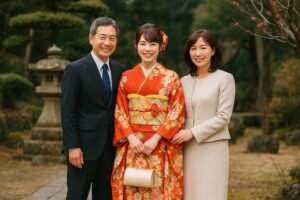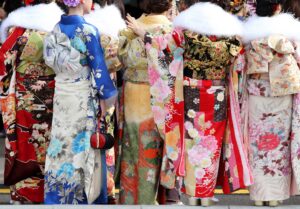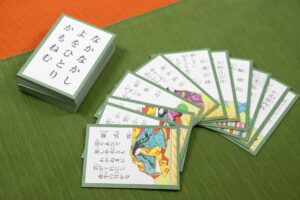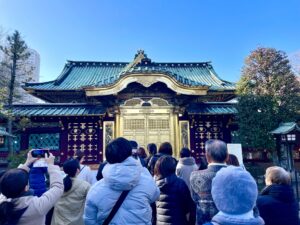Japan’s national holiday on November 23, known as 勤労感謝の日 (Kinrō Kansha no Hi, “Labor Thanksgiving Day”), has a deep and layered history. While it may appear to simply honor workers, the holiday actually traces back to ancient Shinto harvest rituals that predate the modern state by more than a millennium. Over time, the observance moved from imperial court ceremonies to a nation-wide day of appreciation and reflection. In the twentieth century, it underwent a major transformation amid the democratic reforms of the Allied Occupation, becoming a secular day to value labor, production, and human rights. Today, the holiday functions as a mirror of Japan itself: respectful of tradition yet responsive to social change, rooted in agrarian symbolism but relevant to factories, offices, schools, and public service alike. This article explores its origins, evolution, modern observance, and cultural significance in a concise, traveler-friendly, and research-ready overview.
Origins: The Ancient Harvest Ritual of Niiname-sai
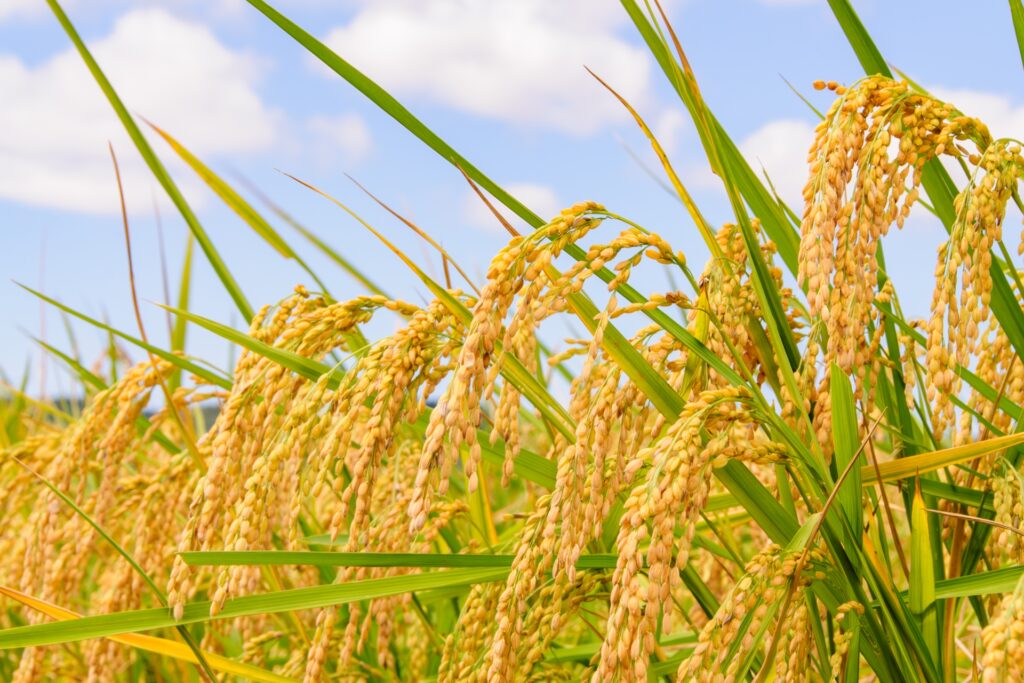
Niiname-sai (新嘗祭) is among Japan’s oldest court rituals, centered on offering the season’s first rice to the deities (kami) and then partaking of it, affirming a sacred bond between people, nature, and the divine. Historically, the Emperor played a pivotal role: he would make offerings of the new rice (shinmai) and then taste it, symbolizing both gratitude for the harvest and the sovereign’s responsibility to ensure harmony between heaven and earth. The earliest firmly recorded instance appears in 673 AD during the reign of Emperor Tenmu, when the ritual was formalized. From that point onward, Niiname-sai became an essential annual event in the imperial court, reflecting an agrarian cosmology in which rice was not merely a staple food but a spiritual lifeline. Over centuries, the rite reinforced ideas of cyclical time, communal dependence on the land, and a moral economy where work, weather, and worship were intertwined. For modern readers, understanding Niiname-sai clarifies why Japan’s later “Labor Thanksgiving Day” retains a distinctive tone of gratitude and modesty rather than spectacle. It is gratitude grounded in the rhythms of nature and the dignity of production.
Key Milestones (Timeline)
| Period | Event |
| Legendary era (Emperor Jimmu) | Mythical beginnings of first-fruit offerings |
| 673 AD (Emperor Tenmu) | Formalization of Niiname-sai ritual |
| Heian to Edo period | Annual court ceremony held without interruption |
| Meiji Era (1868–1912) | Fixed to November 23 under Gregorian calendar |
Meiji Era to Pre-War: Calendar Fixing and National Holiday
During the Meiji period, Japan adopted the Gregorian calendar as part of a broader push to modernize institutions and synchronize with international norms. In this reform, Niiname-sai’s observance was fixed to November 23, transforming a lunisolar, court-centered rite into a predictable date on the modern calendar. This move also reflected a wider realignment in which imperial rituals were increasingly woven into the fabric of national life. Before World War II, State Shinto linked religious ceremony and civic identity, and major court observances were reframed as national events. Niiname-sai thus evolved from an esoteric palace ritual into a public holiday that signaled collective gratitude for the harvest and loyalty to the imperial order. Even as cities industrialized and the economy diversified, the symbolism of first-fruits endured, reminding citizens of agriculture’s foundational status and the Emperor’s ritual guardianship over prosperity.
Trivia — The Old Lunar Timing
Originally, Niiname-sai was held on the last “Day of the Rabbit” of the 11th lunar month — a symbolic day of fertility and renewal. This older timing underscores how the rite once followed celestial and seasonal rhythms rather than a fixed Western calendar date.
Post-war Reform and the Establishment of Labor Thanksgiving Day
After World War II, under the Allied Occupation, Japan reexamined the relationship between religion and state. Many Shinto-linked holidays were restructured to align with the new democratic constitution and a strict separation of religion and government. In 1948, the National Holiday Law redefined the former Niiname-sai as Labor Thanksgiving Day (Kinrō Kansha no Hi). The new framing pivoted from imperial ritual to civic values: gratitude for labor, respect for production, and an emphasis on human rights. Rather than celebrating a specific harvest rite, the holiday now honored all forms of work — agricultural, industrial, and service — signaling a philosophical shift from agrarian sanctity to universal dignity of labor. This change did not erase the past; instead, it reframed gratitude in a democratic key. The transformation can be read as a symbolic “democratization of thanks”: from divine offerings to human appreciation, from court-centered ceremony to community-centered reflection, and from a singular imperial actor to the nation’s many workers whose efforts sustain daily life.
Modern Meaning and Observance Today

In contemporary Japan, Labor Thanksgiving Day is a public holiday: schools and most offices close, and the mood is calm rather than festival-like. The day invites citizens to pause and recognize the people behind essential services and everyday comforts — municipal workers, healthcare staff, firefighters, police officers, transit employees, and countless others. Many elementary schools encourage children to craft thank-you cards or letters to local workers, fostering civic empathy from an early age. Some companies use the occasion for employee appreciation events, internal awards, or wellness activities, reinforcing a culture of acknowledgment that goes beyond salary and title. Families often spend a quiet day together, visit parks, or join community-led gratitude initiatives, particularly in smaller municipalities where local associations organize low-key events. Importantly, the imperial Niiname-sai continues privately within the Imperial Household on the same date, but the national observance remains secular, focusing on shared social values rather than ritual theology.
Typical Activities on November 23
Common observances reflect the holiday’s gentle, civic character. Schools frequently host programs where students create gratitude letters for workers or present handmade gifts to local service professionals. Workplaces may schedule internal recognition ceremonies, spotlighting long tenure, safety milestones, or cross-team collaboration. Communities hold appreciation events at public halls, libraries, or parks, highlighting the contributions of firefighters, sanitation crews, and hospital teams. Families use the day to rest, stroll through autumn foliage, or attend small-scale cultural gatherings. Because it is a national holiday, most government offices and many private businesses are closed; travelers should plan ahead for reduced services or altered hours. The overall effect is a national exhale: few grand parades, but many small gestures of thanks that collectively signal social solidarity.
Activities at a Glance
| Activity Type | Example |
| School tradition | Students write gratitude letters to workers |
| Workplace | Employee recognition ceremonies |
| Community | Local appreciation festivals |
| Family | Rest day and quiet celebration at home |
Cultural Significance and Social Messages
Labor Thanksgiving Day encapsulates several Japanese social values that resonate across generations. First is the collective appreciation for labor and production — a recognition that society’s comforts result from countless, often invisible tasks. Second is respect for all professions, from frontline responders to behind-the-scenes staff, reflecting an ethic of mutual dependence and humility. Third is the link between gratitude, harmony, and productivity: expressing thanks is not only polite; it underwrites cooperation and well-being at scale. In recent years, conversations about work-life balance and labor reform add fresh meaning to the day, prompting reflection on healthy workplaces and fair practices. For American readers, a quick comparison with U.S. Thanksgiving is illuminating: both holidays express gratitude, but Japan’s observance centers on civic appreciation rather than a family feast.
Quick Comparison: Japan and U.S. Thanksgiving
| Aspect | Japan – Labor Thanksgiving Day | U.S. – Thanksgiving Day |
| Date | November 23 (fixed) | Fourth Thursday of November |
| Focus | Gratitude for labor and production | Gratitude for harvest and family |
| Religious Roots | Shinto (Niiname-sai) | Christian/Puritan origins |
| Modern Celebration | Secular, community and civic focus | Family-oriented feast and travel |

Untapped Topics and Future Directions

Several valuable angles remain underexplored and merit attention from researchers, HR leaders, and travelers. Corporate traditions vary widely: some firms run peer-nominated awards, volunteer days, or wellness clinics; others spotlight safety or craftsmanship achievements, creating a living archive of workplace gratitude. Regional differences also shape the day: municipalities and schools may host local fairs, appreciation ceremonies, or arts workshops, especially in areas with strong agricultural or manufacturing identities. The holiday’s theme intersects with labor reforms, raising timely questions about overwork, flexible schedules, and remote work — how might “gratitude for labor” evolve as automation and AI reshape tasks? Can recognition practices support inclusion and mental health more effectively? For visitors, the day offers a gentle window into Japanese civic life: expect some closures but also community events and a reflective national mood. Planning tips include checking museum hours, using public transit schedules, and seeking out local cultural centers where small exhibitions or talks may be held.
Conclusion
From an ancient imperial harvest ceremony to a modern celebration of human labor and community gratitude, Japan’s Labor Thanksgiving Day spans myth, monarchy, and modernity. Understanding this arc illuminates how Japan balances reverence for tradition with pragmatic reform — preserving the quiet dignity of thanks while widening its circle to include every worker’s contribution. Whether you are a traveler planning an autumn trip, a student comparing civic holidays, or a professional exploring workplace culture, November 23 offers a moment to pause and appreciate the interdependence that powers daily life. When you find yourself in Japan on November 23, take a moment to appreciate the quiet spirit of gratitude that runs through this national day — it’s far more than just a day off.







